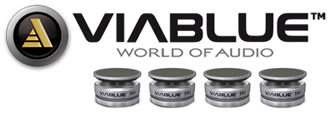New Customer?
Create your accountNo products
Prices are tax included
By buying this product you get 129 loyalty points
AUDIO-GD R-28 MK3 DAC R2R DSD Natif I2S ACSS Amanero / Preamplifier / Headphone Amplifier Black
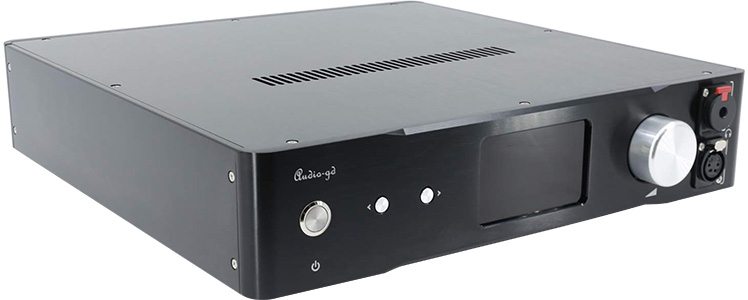
With the R-28 MK3, Audio-GD has updated its R2R DAC, which doubles as a discrete balanced preamplifier and headphone amplifier. All the qualities of its predecessor are retained, from the ladder resistor network controlled and corrected by FPGA to the symmetrical amplification of the signal by transistors, passing through a very low noise and ultra high speed power supply. This MK3 version is distinguished by the introduction of isolation between the digital and analogue stages of the device, improving sound quality, and by the addition of a brand-new NOS (Non-OverSampling) mode.
Audio-GD R-28 MK3 : Balanced R2R DAC
The digital/analogue conversion of the R-28 MK3 is carried out by an ultra-low tolerance resistor network corrected by a high-speed FGPA logic circuit. The distinctive feature of this type of construction is that the task of conversion and reconstruction does not rely solely on the analogue precision of the electronic components, but takes account of this same variability in the conversion process. The result is a sound with all the ‘density’ of R2R sound in its subtlest details, while maintaining excellent output signal stability.
This stage is divided into 4 discrete modules dedicated to native DSD and 8 discrete R2R modules dedicated to PCM, all operating in parallel. This design is thus capable of processing an entire digital signal during a single clock cycle, avoiding a potentially audible accumulation of inaccuracies and allowing correction at bit level (rather than by bit groupings). This will play a considerable role in achieving a high dynamic range (including SNR >120dB) while keeping distortion and jitter extremely low.
This design is particularly interesting in that it reduces sensitivity to jitter to an almost insignificant level compared with a conventional Delta Sigma DAC. Clock noise, digital/analogue conversion noise and other undesirable frequencies that can cause distortion or aliasing are dealt with extremely effectively, increasing performance at all subsequent levels of the chain.
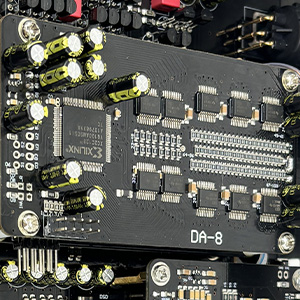
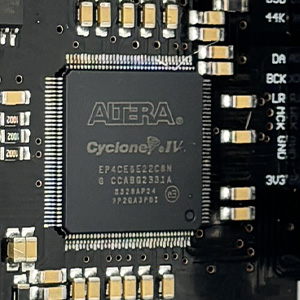
Audio-GD R-28 MK3 : A high-quality digital circuit
The digital circuitry of the R-28 MK3 uses high-quality components, specially selected and assembled to optimise understanding and decoding of the audio stream. These include a TCXO clock, an Altera FGPA logic circuit and a proprietary Xilinx FIFO on-chip input circuit for all digital inputs.
In this configuration, the FGPA can operate a precise re-lock of the clock signal via the FIFO design on the internal clock rate, which furthermore facilitates the rejection of clock noise and corrects the digital imperfections accumulated from the audio source.
This digital circuit not only provides high-quality digital filtering, but also incorporates an integrated oversampling function (x2 / x4 / x8) and 2 NOS modes (true NOS with 6dB analogue filtering). All of this can be configured by the user to suit their listening preferences as well as the specifics of their audio installation.
Audio-GD R-28 MK3 : Amanero USB interface
The Amanero Combo 384 USB interface is an asynchronous design designed to minimise the need for external noise sources. To achieve this, it works with a duo of low phase noise TCXO oscillators, a judicious construction when it comes to isolating the audio stream in all its clarity.
The interface is powered internally, which has the effect of relieving the pressure of interference and bringing out micro-details without having to over-process the digital signal transiting via USB with additional dithering. This design preserves the sharpness of the impulse image, restoring a deep soundstage with rigorously controlled dynamics.
What's more, thanks to this interface, the R-28 MK3 is capable of accessing PCM formats up to 384kHz 32bit and DSD up to DSD512.
Audio-GD R-28 MK3 : Balanced analogue output stage
The analogue output stage of the R-28 MK3 is made up of multiple completely discrete amplification stages based on matched pairs of transistors. 4 pairs of 15W transistors provide excellent signal amplification.
In keeping with GD's audio tradition, the R-28 MK3 features a fully feedback-protected, very low impedance analogue Mini XLR current ACSS output. This unique design is highly appreciated for the precision of the details and the width of the soundstage in the final reproduction.
The device has an integrated volume control operating on 4 channels. These are driven by a digital signal and control resistors with analogue settings. KOA / Vishay resistors work in parallel to provide a tolerance of 0.05%.
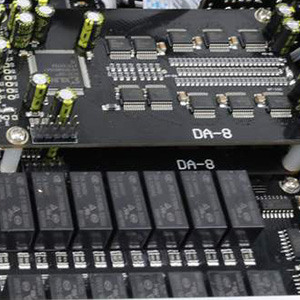
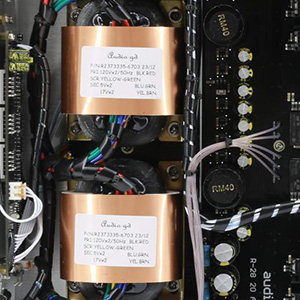
Audio-GD R-28 MK3 : Separate power supply stage
The R-28 uses high-quality R-Core transformers with low noise and low magnetic loss. This power supply is divided into 10 power supply groups selected for their ultra-high speed and ultra-low noise.
Dual-stage technology ensures signal continuity and cleanliness for the digital stages.
Conversely, the analogue amplification stages benefit from two pure Class A power supplies.
Audio-GD R-28 MK3 : Flawless connectivity
A veritable convergence point for audio sources, the R-28 MK3 boasts hyper-complete connectivity that will make it much easier to integrate into all types of sound installation, starting with the most ambitious.
There are HDMI (I2S), USB, Optical and Coaxial inputs, as well as analogue XLR inputs, so you can combine digital and analogue audio sources on a single device and control everything from a single source.
On the output side, the R-28 MK3 is equipped with RCA / ACSS and XLR (balanced) connectivity, as well as two headphone outputs. All these options ensure optimum interoperability despite its high level of technical sophistication.
Audio-GD R-28 MK3 : Smooth control
The R-28 MK3 is controlled via the front-panel buttons, which can be used to navigate and select a plethora of options, including the following:

- The first symbol from the left designates the output mode, H the headphone output, P the preamp output with volume control and D the DAC output with fixed volume.
- The second symbol designates the gain level: L designates a gain of 13dB and H a gain of 26dB.
- The third and fourth symbols refer to the sampling rate: N0 designates the new NOS mode, N1 the classic NOS mode, 02 an oversampling of x2, 04 an oversampling of x4 and 08 an oversampling of x8.
- Finally, the fifth symbol indicates the mode selected for the outputs available on the rear of the device: P for an output with volume control, 2 for a 2Vrms DAC (XLR) output, 3 for a 3Vrms DAC (XLR) output, 4 for a 4Vrms DAC (XLR) output and 5 for a 5Vrms DAC (XLR) output.
It should also be noted that the RCA outputs are always half the level of the XLR outputs. The headphone outputs still have a volume control. Finally, XLR input 5 still has a volume control.
Audio-GD R-28 MK3 : Aluminium remote control included.
The unit comes with a solid aluminium remote control that looks great too. This allows you to comfortably control the basic functions of the R-28 MK3 without having to move around or disturb your listening experience.
Technical characteristics
| Specifications | |
|---|---|
| Product type | R-2R DAC Headphone amplifier Preamplifier |
| Inputs | Digital: I2S (HDMI) / USB / Optical / Coaxial Analog: XLR |
| Outputs | RCA / XLR / ACSS |
| Signal-to-noise ratio (SNR) | > 120dB |
| Total harmonic distortion more noise (THD+N) | < 0.01% |
| Gain | L : +12DB H : +22DB |
| Volume control | Oui (100 niveaux super Exponentiel) |
| Channel balancing | < 0.05dB |
| Frequency response | 20Hz - 20KHz (< -0.5dB) |
| Output Level | Headphone output : 19V RMS Variable preamp output : 19V RMS DAC fixed output : 5V RMS |
| Balanced headphone output power | 9500mW @ 25 Ohm 8000mW @ 40 Ohm 3500mW @ 100 Ohm 1200mW @ 300 Ohm 600mW @ 600 Ohm |
| Single-ended headphone output power | 2700mW @ 25 Ohm 2200mW @ 40 Ohm 1000mW @ 100 Ohm 350mW @ 300 Ohm 170mW @ 600 Ohm |
| Output impedance | Headphones : 1 Ohm DAC / preamp : 5 Ohm |
| Input sensitivity | 0.5Vp-p (75 Ohms, Coaxial) 19dBm (Optique) |
| OS support | Windows (with driver), OSX, Linux, ISO |
| Supported sample rates | USB & IIS : 44.1kHz - 384kHz /32Bit DSD64-512 Coaxial mode: 44.1, 48, 88.2, 96, 192kHz Optical mode: 44.1, 48, 88.2, 96kHz |
| Housing | Aluminum |
| General | |
|---|---|
| Power Supply | 220-240V AC50/60Hz |
| Power consumption | 24W |
| Weight | 7.6Kg |
| Dimensions | 360 x 360 x 85mm |
| Package | 1x Audio-GD R-28 MK3 1x USB cable 1x Câble USB 1x Aluminium remote control |
| Input | Optical |
| Input | USB |
| Input | SPDIF |
| Input | I2S via HDMI |
| Input | XLR |
| Output | RCA |
| Output | ACSS |
| Output | XLR |
| DAC / ADC Chip | R2R LADDER DAC |
| Max sampling rate | DSD512 |
| Max sampling rate | 384kHz |
| Color | Black |
| Class | Class A / AB |
| Networking | No |
| Remote Control | Yes |
No reviews at this time.


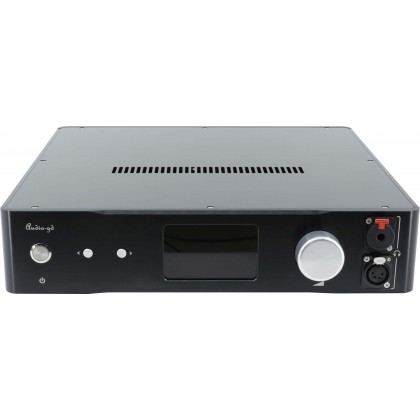










![[GRADE B] AUDIOPHONICS HPA-S500ET Power Amplifier Class D Stereo Purifi 1ET7040SA 2x500W 4 Ohm](https://www.audiophonics.fr/68112-thumb_default/audiophonics-hpa-s500et-stockb.jpg)






















